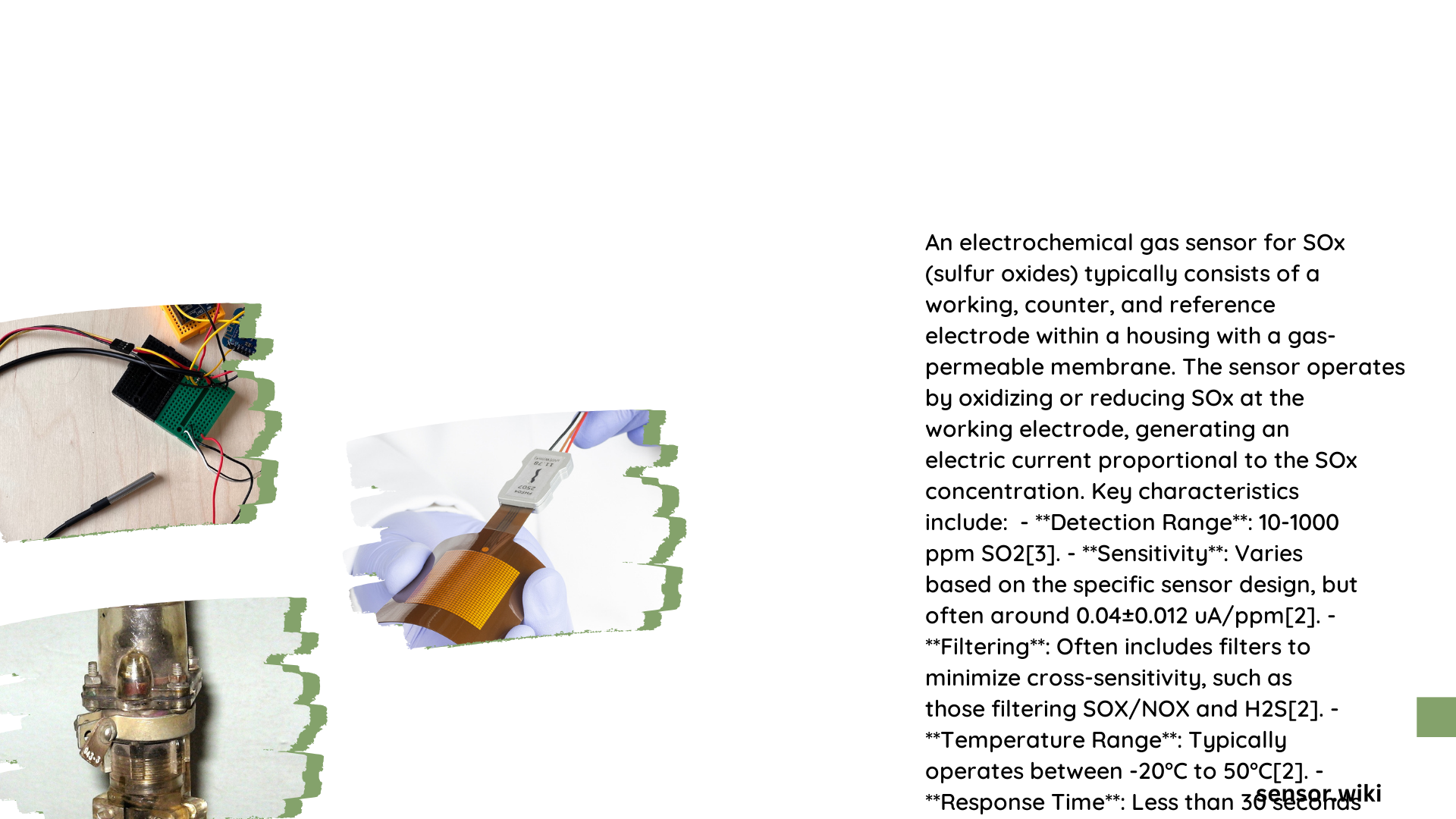Electrochemical gas sensors for SOx represent sophisticated analytical technologies designed to detect sulfur oxide concentrations with exceptional precision. These advanced sensors leverage complex electrochemical reactions to provide real-time monitoring of SOx levels across various industrial and environmental applications, utilizing specialized electrode configurations and innovative solid-state electrolyte systems to achieve remarkable sensitivity and reliability.
What Makes Electrochemical Gas Sensors Unique for SOx Detection?
Electrochemical gas sensors for SOx offer unprecedented capabilities in detecting sulfur oxide concentrations through sophisticated electrochemical mechanisms. These sensors transform gas molecule interactions into measurable electrical signals, enabling precise environmental and industrial monitoring.
How Do Electrochemical Mechanisms Work?
The core functionality of electrochemical gas sensors for SOx involves intricate interactions between specialized electrodes and sulfur oxide molecules:
- Working Electrode Interactions
- Silver or silver-palladium electrodes
- Platinum film coating for enhanced stability
-
Direct chemical reaction with SOx molecules
-
Electrolyte Composition
- Yttria-stabilized zirconia ceramic substrate
- High ionic conductivity
- Enables precise chemical potential measurements
What Are the Key Performance Characteristics?
| Performance Parameter | Typical Range |
|---|---|
| Sensitivity | 1-500 ppm SOx |
| Response Time | <60 seconds |
| Operating Temperature | 500-930°C |
| Sensor Lifespan | 2-3 years |
What Challenges Exist in SOx Detection?
Electrochemical gas sensors face several critical challenges:
- Cross-Sensitivity: Potential interference from other gas molecules
- Temperature Variations: Impact on sensor accuracy
- Electrode Degradation: Gradual performance reduction
- Calibration Requirements: Regular maintenance needed
How Are Environmental Factors Managed?
Sophisticated sensor designs incorporate multiple strategies to mitigate environmental influences:
- Temperature compensation circuits
- Humidity protective mechanisms
- Advanced filtering technologies
- Robust electrode material selection
What Are the Industrial Applications?
Electrochemical gas sensors for SOx find extensive applications across multiple sectors:
- Power Generation
- Industrial Emissions Monitoring
- Environmental Research
- Petrochemical Processing
- Automotive Exhaust Analysis
What Future Developments Are Anticipated?
Emerging research focuses on:
– Nanomaterial electrode development
– Improved cross-sensitivity reduction
– Lower detection limit achievements
– Enhanced durability and reliability
Technical Considerations for Implementation
Critical implementation factors include:
– Proper sensor placement
– Regular calibration protocols
– Understanding specific environmental conditions
– Selecting appropriate sensor specifications
Conclusion

Electrochemical gas sensors for SOx represent a sophisticated technological solution for precise sulfur oxide detection, offering unprecedented monitoring capabilities across diverse industrial environments.
Recommendations for Users
- Conduct thorough environmental assessment
- Select sensors matching specific application requirements
- Implement regular maintenance protocols
- Stay updated with emerging sensor technologies
Technical Specifications Summary
- Detection Range: 1-500 ppm
- Response Time: <60 seconds
- Operating Temperature: 500-930°C
- Typical Accuracy: ±2-5% of measured value
Emerging Research Directions
Future developments will likely focus on:
– Nanotechnology integration
– Improved material sciences
– Enhanced signal processing algorithms
Reference:
– Electrochemical Sensor Technologies
– SOx Detection Mechanisms
– Industrial Gas Monitoring Techniques
